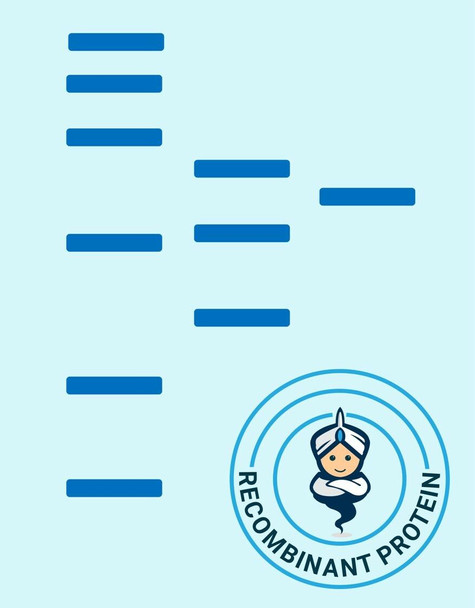Mouse RELM b Recombinant Protein (RPPB0923)
- SKU:
- RPPB0923
- Product type:
- Recombinant Protein
- Size:
- 25ug
- Species:
- Mouse
- Target:
- RELM b
- Synonyms:
- Resistin-like beta
- RELM beta
- Cysteine-rich secreted protein FIZZ2
- Colon and small intestine-specific cysteine-rich protein
- Source:
- Escherichia Coli
- Uniprot:
- Q99P86
Description
| Product Name: | Mouse RELM b Recombinant Protein |
| Product Code: | RPPB0923 |
| Size: | 25µg |
| Species: | Mouse |
| Target: | RELM b |
| Synonyms: | Resistin-like beta, RELM beta, Cysteine-rich secreted protein FIZZ2, Colon and small intestine-specific cysteine-rich protein, Cysteine-rich secreted protein A12-alpha-like 1, Colon carcinoma-related gene protein, RELM-b, XCP2, HXCP2. |
| Source: | Escherichia Coli |
| Physical Appearance: | Brownish lyophilized powder. |
| Formulation: | The protein was lyophilized from a concentrated (1mg/ml) protein solution containing 10mM Acetic Acid with 2:1 mannitol to protein. |
| Solubility: | Reconstitute at 0.1 mg/ml with sterile pyrogen free water. |
| Stability: | Lyophilized RETNLB is stable at -20°C. After reconstitution the protein should be kept at all times at -20°C. It is recommended to add a carrier protein (0.1% HSA or BSA) for long term storage. |
| Purity: | Greater than 97% as determined by SDS-PAGE. |
| Amino Acid Sequence: | MQCSFESLVD QRIKEALSRQ EPKTISCTSV TSSGRLASCP AGMVVTGCAC GYGCGSWDIR NGNTCHCQCS VMDWASARCC RMA |
| UniProt Code: | Q99P86 |
RELM-beta (Resistin-Like Molecule-beta) is a member of a recently identified family of secreted proteins containing a conserved cystein-rich C-terminus. The RELM family consists of resistin (also called FIZZ3), RELM-alfa (FIZZ1), RELM-beta (FIZZ2) and RELM-gamma. Only resisistin and RELM-beta were found in humans whereas all four RELM family members were identified in rodents.RELM-beta appears to be produced as a homodimer exclusively by intestinal goblet cells and can be found in high quantities in stool. Remarkably, stool of germ-free mice displaying sterile intestinal tract does not contain RELM-beta until bacterial colonization takes place after pathogen-free mice entered natural environment. Some, but not all, colon carcinoma cell lines secrete RELM-beta into the cell culture supernatant.The physiological function of RELM-beta is not known. High doses of recombinant RELM-beta showed hyperglycemic effects including lowered glucose disposal and increased hepatic glucose production in mice.
Mouse RELM-b Recombinant produced in E.Coli is a monomeric, non-glycosylated, polypeptide chain containing 83 amino acids and having a molecular mass of 8.9kDa. The Mouse RETNLB is purified by proprietary chromatographic techniques.










